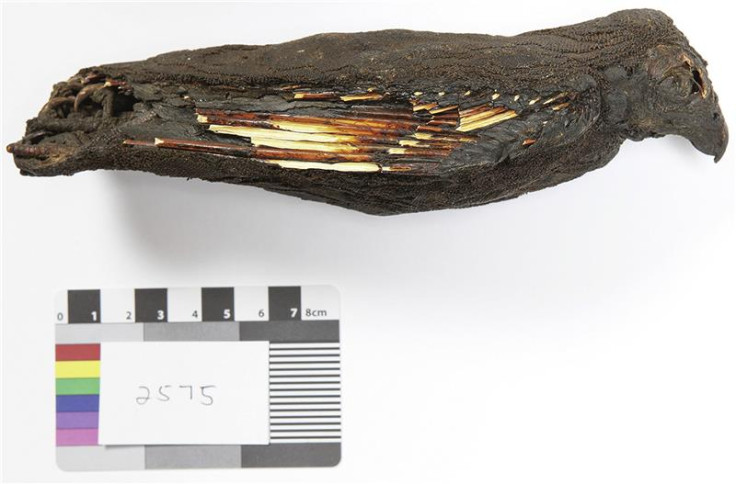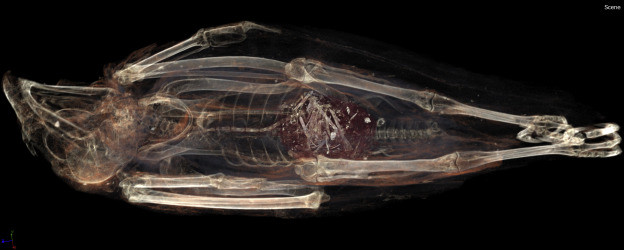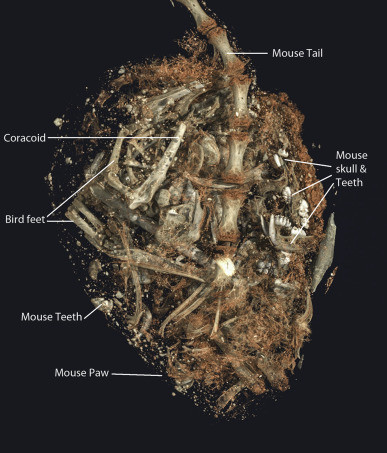Ancient Egyptians bred and force-fed kestrels as religious offerings to the gods

Ancient Egyptians bred birds of prey for religious offerings to the gods, scientists have discovered. The use of 3D imaging of a mummified kestrel showed it died because of forced overeating, with the bird having choked to death on its last meal of a mouse.
Published in the Journal of Archaeological Science, the team from the American University in Cairo, Stellenbosch University and the Stellenbosch Institute for Advanced Studies said this is the first evidence to show ancient Egyptians mass bred birds of prey as offerings to gods. It is also thought these birds were used in falconry for hunting.
Lead author Salima Ikram said: "The idea of birds of prey being bred to the extent of being kept and force-fed is new. Until now, the sheer number of raptor mummies had been a mystery – did they catch or trap them and kill them, raid nests, or find them dead? Our results explain why they had so many: we now think it was because of active breeding."
Mummified animals from ancient Egypt are commonly found. Earlier this year, researchers said a catacomb containing eight million mummified puppies and dogs was found next to the temple of Anubis, the dog-like god of death, in North Saqqara in Egypt.

Ancient Egyptians believed in many gods and associated different animals with them. Raptors like kestrels were connected to the sun god Re. These birds were prepared by being gutted, dried and dipped into a molten resin and wrapped up. However, in some cases the birds were not gutted – providing an insight into how the bird lived before it died.
The scientists carried out a virtual autopsy on the mummified kestrel known as SACHM 2575. They discovered it choked to death on a young house mouse, with more mouse fragments found further down in its stomach – meaning it likely had more than one mouse earlier in the day – as well as the remains of a small sparrow. Wild kestrels need between four and eight voles per day.
In the study, the authors said: "The fact that this kestrel's gizzard contained the teeth of mice, and parts of a sparrow, in addition to the final mouse whose tail was stuck in its esophagus, suggests that it was force-fed. This method of feeding animals was commonly practised by the ancient Egyptians.

"This would indicate that the SACHM 2575 was a captive specimen destined to be transformed into a votive mummy for the sun god – perhaps, in their enthusiasm to give the god his due, the sacrificial offering was force- fed, and given the species' tendency to cache surplus food, it is unlikely that it would deliberately overeat. Thus, SACHM 2575 provides the first real evidence for keeping raptors in captivity ... It also broaches the possibility that breeding programs for these animals were instituted, as was the case for other animal offerings, such as ibises, dogs, and cats."
Ikram said the study was one of the "most entertaining and exciting" pieces of research to do, providing an insight into how ancient Egyptians managed to mummify so many raptors: "We know raptors were religiously important but it's interesting to think about the role they may have had in falconry. It's also interesting that Egyptians were exerting so much thought and control over nature and that their aptitude with wild animals is considerable."
The authors said they hope to identify the sex and DNA of offered birds in order to better understand breeding groups and the role and management of raptors at the time, while also giving an insight as to how ancient Egyptians saw the natural world and their role in maintaining it.
© Copyright IBTimes 2025. All rights reserved.





















